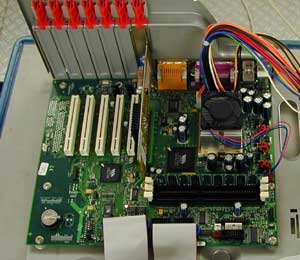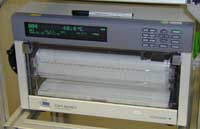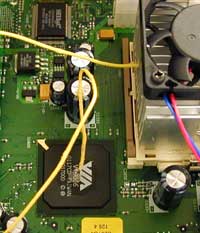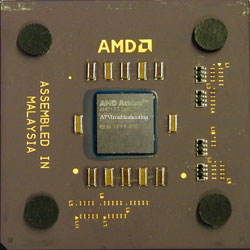Main Page
"HowTo"
Guides
Troubleshooting
Guides
BIOS related information
CPU related information
Overclocking
Articles
Downloads
Forum
Links
|
|
|
|
How this test was done
 |
The test system was placed in the middle of a temperature
chamber. As this test is to show efficiency of CPU coolers
and not of case designs, the cpu cooler was tested in the
open. A constant, slight air flow kept the temperature in
the chamber evenly distributed. Ambient temperature was kept
at exactly 35°C. This is about the temperature you may
find inside a computer case.
After powering on, the heatsink was allowed to heat up for
five minutes during Windows2000 idle. Then the first measurement
was taken. Another five minutes the heatsink was allowed to
heat up while running Prime95 to create almost 100% CPU load.
After that the second measurement was taken.
The time of five minutes was chosen because tests verified
that heatsinks would have reached their maximum temperature
by then and further time would not make the temperature rise
any further.
|
|
The ambient temperature as well as several temperatures measured by sensors fixed to the mainboard, cpu and heatsink were logged during the whole test and cross checked with the cpu on-die sensor readings to verify their validity.
The values for air flow and noise were taken from the data sheets of the fan manufacturers. Some values are missing as not all data sheets were available on the internet. Unfortunately there was no time for measuring the noise in comparable circumstances, so the dB values for noise should only be seen as a rough guidline. If time allows, this test will be updated with measurements done in a dedicated acoustic test chamber.
|
 |
 |
The test mainboard was an Fujitsu-Siemens
Computers D-1289. It is KT266 based and was equipped with
128MB of DDR SD-RAM. The thermal management function, which
comes in very handy when overclocking or in case of a fan
failures, was set to 90°C during the test. As soon as
the cpu die temperature would rise over this value, a microcontroller
would throttle the CPU. So 90°C was the maximum temperature
measurable- for the sake of the CPU's safety.
Update : Some people asked where to buy this mainboard. Either
go to Case-Shop
(german site!), ask me in the forum
or drop me a mail.
I'll see how I can help you.
|
|
The processor used was an AMD Athlon "Palomino" 1333Mhz. The die temperature was measured using the internal diode inside the CPU die. According to AMD, this is the most accurate temperature one can measure.
Between all tests, the CPU was cleaned, de-greased and an appropriate ammount of zinc-oxyde / silicone based thermal grease was applied in order to get maximum cooling performance.
If there was a heat transfer pad on the cooler, it was carefully
removed with acetone and alcohole. This was done to make all
coolers compete under the same terms, with thermal grease.
See the article What
heat transfer material is best ? for more details on heat
transfer materials.
|
 |
Next Topic : The Candidates
|
Index
|





